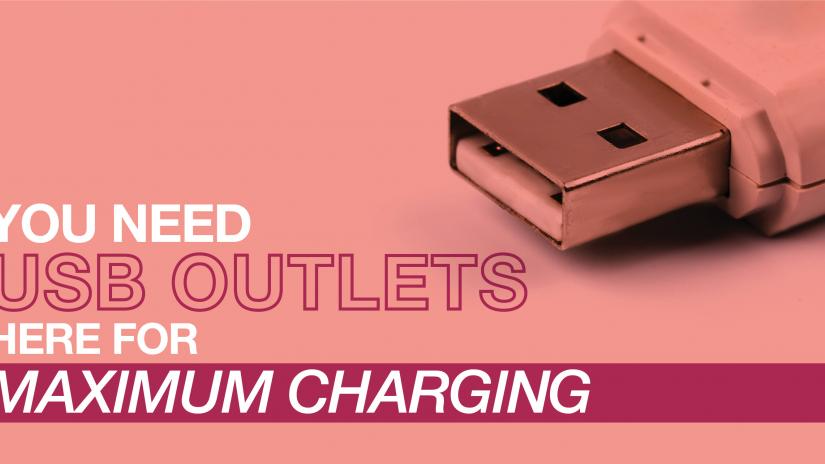
Mr. Electric explains why installing USB outlets enhances charging convenience and efficiency at home.
|
With so many adults, teenagers, and even young children owning everything from smartphones and tablets to iPods and fancy smartwatches, there’s no doubt outlet space is at a premium in most American homes. Luckily, outlet altercations can be avoided simply and inexpensively without the need for an intensive whole-house renovation – all it takes is a USB outlet swap out.
Banish the bulk
Instead of clogging up an entire receptacle with a bulky wall charger, upgrade to USB outlets and finally rid your home of round-the-clock outlet monitoring and squabbles. Rapidly becoming the standard in homes due to the annoying glut of chargeable devices, USB outlets can make life in your home (or office) a lot easier.
Go with the flow
Stash USB outlets conveniently away in master bedrooms, kids bedrooms, and guestrooms, locating them by nightstands where sleeping gadgets lie, add them to the living room couch for convenience, ease-of-access, and use while charging, or even in the home office and kitchen to control countertop clutter. Outlet options are vast in shapes, styles, and configurations, from duplex and dual USB outlet configurations, to oversized outlet/USB combinations, complete with built-in surge protection. The best part? Outlets are but $12-25 on average, making these sanity saving additions an easy investment.
The big fat details
There are two things to check before selecting a USB outlet for an upgrade:
- The depth of your junction box.
Older homes have slimmer junction boxes that aren’t as deep as USB outlets, which require deeper holes. If this is your home, fitting the new box safely and drywall patching may put a DIY-swap out of your comfort zone. NEVER simply jam the box in. - The amount of amperage needed to charge your favorite devices.
Whether your purchasing portable power or wall chargers, check amperage to determine suitability. Some outlets cannot charge 2 devices simultaneously. Lightweight 1A connections may not charge, or very slowly charge devices compared to beefier 2A options. If outlets do not specify, divide the total amperage across all ports.
How to install a USB outlet
Always check local regulations before attempting anything electrical – even a simple outlet upgrade could be against code, or put warranties and insurance into question.
- Turn off power to the room and outlet at the main breaker box.
- Verify breakers off with voltmeter or known working device.
- Remove the screw holding the faceplate, then the faceplate itself.
- Unscrew the receptacle from the electrical box.
- Remove the wires from the old receptacle using a screwdriver, and attach them to the new receptacle.
- If wires look worn, trim them, removing about ½” of sheathing with wire cutters/strippers to expose a clean surface.
- Re-attach the wires:
- Black (hot) wires to gold or black screws.
- White (neutral) wires to silver or white screws.
- Green or unsheathed wires (ground) to green screws.
- Using needle nose plyers, create a hook on the end of each wire. This will aid in attachment. Loop each hook around the appropriately colored screw, then tighten the screw.
- When all wires are securely attached, push everything back into the electrical box, then screw the new receptacle in.
- Turn the breaker back on and test the receptacle, then attach the new faceplate.
Love high-tech gadgets, but suffer from low-tech electrical experience?
If you can’t already visualize what’s happening behind the outlet here, you’re probably in over your head. Luckily Mr. Electric® is here to help, with fast, friendly USB outlet upgrade services to restore peace to your home. Don’t go unplugged. Contact Mr. Electric today.
Subscribe today for free to recieve My Home Life magazine e-newsletter in your inbox and begin learning to improve your home life. Click here.

